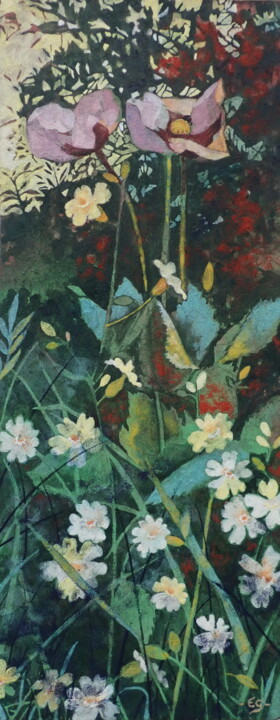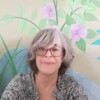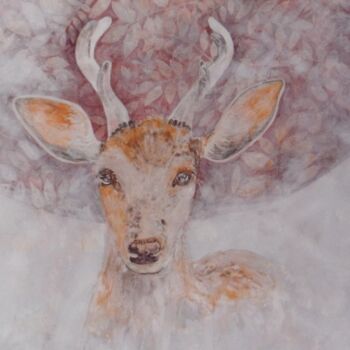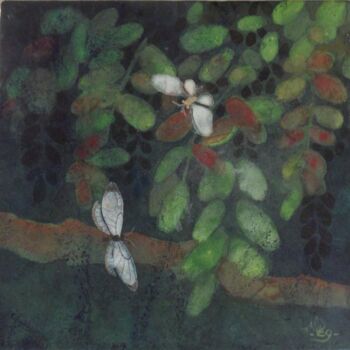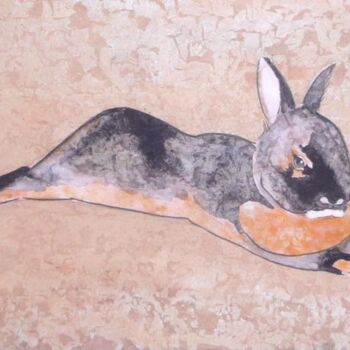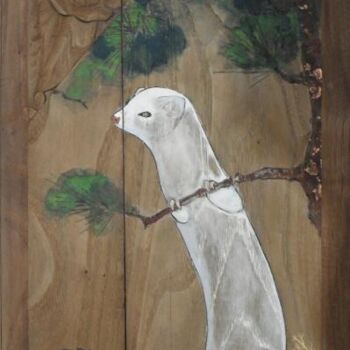Fleurs d'été (2020) 绘画 由 Valérie Eguchi
电子许可
此图片可以用许可证下载
US$32.30
US$129.18
US$269.13
最大分辨率: 1464 x 3758 px
购买后立即下载
艺术家获得每笔销售的版税
由 Valérie Eguchi 出售
-
原创艺术品 (One Of A Kind)
绘画,
颜料
在纸上
- 外形尺寸 高度 16.3in, 宽度 6.5in
- 是否含画框 这件作品是诬陷 (Floating Frame)
- 分类 画作 低于US$1,000 形象艺术
Pendant cet été 2020 les fleurs de pavot et de coquelicot poussaient à foison autour de la maison. A travers cette oeuvre, j'ai voulu faire ressentir l'enchantement que je ressentais .
Pigments minéraux sur washi fixé sur contreplaqué.
La technique utilisée est celle du nihonga. Technique de peinture japonaise traditionnelle
Pendant cet été 2020 les fleurs de pavot et de coquelicot poussaient à foison autour de la maison. A travers cette oeuvre, j'ai voulu faire ressentir l'enchantement que je ressentais .
Pigments minéraux sur washi fixé sur contreplaqué.
La technique utilisée est celle du nihonga. Technique de peinture japonaise traditionnelle
#artistsupportpledge
Cette œuvre est une œuvre d'art originale unique
Pigments minéraux sur washi fixé sur contreplaqué.
La technique utilisée est celle du nihonga. Technique de peinture japonaise traditionnelle
#artistsupportpledge
Cette œuvre est une œuvre d'art originale unique
相关主题
Valerie Eguchi is an artist based in France. Since she discovered Nihonga in 2007, she has been studying and practising Nihonga with great determination, overcoming difficulties in accessing materials and language[...]
Valerie Eguchi is an artist based in France. Since she discovered Nihonga in 2007, she has been studying and practising Nihonga with great determination, overcoming difficulties in accessing materials and language barriers. In her attempts to understand Nihonga, she has sought out learning opportunities by assisting teachers and working tirelessly through experimentation and referencing from real artefacts. Her works show great sensitivity to the subjects she paints and dexterity in adapting from another culture.
Currently, Valerie organises workshops in France through her association, Pigments et Arts du Monde and actively champions the preservation and promotion of Nihonga.
You specialise in decorative and wall painting, in addition to painting Nihonga. How did you get started?
I was 25 years old when I went to Paris for specialist training in that. After that, I started making copies of paintings in my boss’s workshop as well as doing work for companies. Then, I left and set up my own business. I worked for private individuals, restaurants, and hotels for the next 18 years. (At first when I started making art, I was using classical techniques I had learnt in oil painting. Then I started using pigments and acrylic mediums.
Click below to read more.
You mentioned that you discovered Nihonga after several visits to Japan. Can you tell us more about that?
Actually, I first saw Nihonga in France in 1994 because of an exhibition on Uemura Shoko and Atsushi at the Mitsukoshi Gallery in Paris. After that, I looked in vain for information on Nihonga in France. The third time I visited Japan, I went to Kotohira temple in Shikoku. There, I was fortunate enough to visit rooms that were usually forbidden to the public. It was also then when I saw ancient votive paintings known as Ema.
Because my husband was working at the time to organise an exhibition at Guimet Museum, I benefited from all the documentation on Kotohira. When I first started making art, I was using classical techniques I had learnt in oil painting. Then perhaps during this time, I started using pigments and later acrylic mediums. In Japan, I bought pigments, and books on Nihonga.
And fortunately in the same year, I met the Taiwanese artist Chen Yiching who was a student of Uemura. She agreed to come to teach in our association, Pigments et Arts du Monde. I studied under her for a year then I assisted her for the next 2 years. By then, I began to reproduce works of Kotohira temple.
Can you explain what Nihonga is to you?
Nihonga deepened my sense of the material. The contact of my hands with natural materials, and the play of water with the pigments are important reasons why I chose to work with Nihonga.
And so I look for this osmosis with nature such as it is conceived in Japan, as a feeling of the absolute and perfection.
What is it like to practise Nihonga outside of Japan, particularly in France?
It is like being an outsider in your own...

